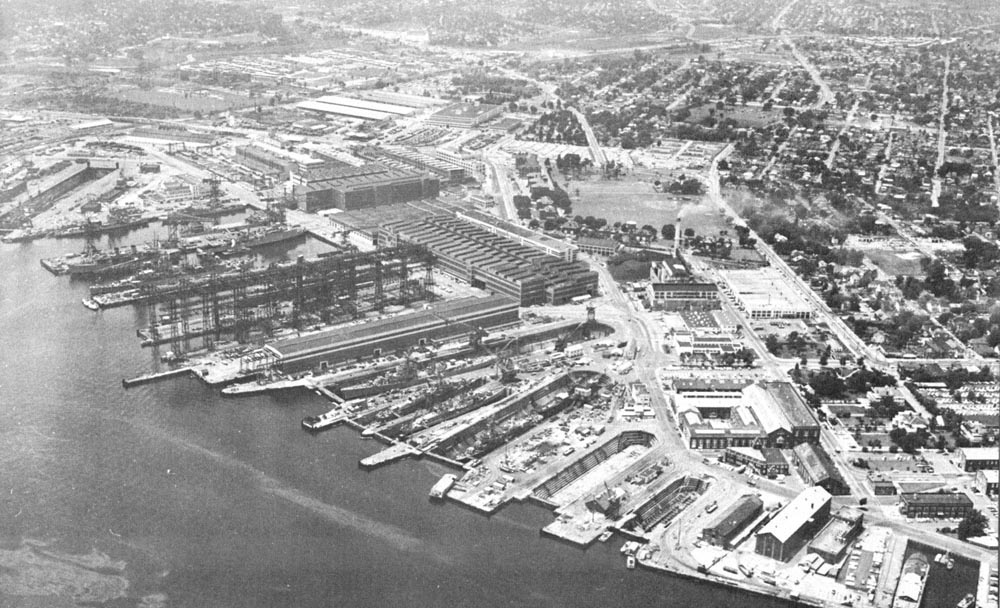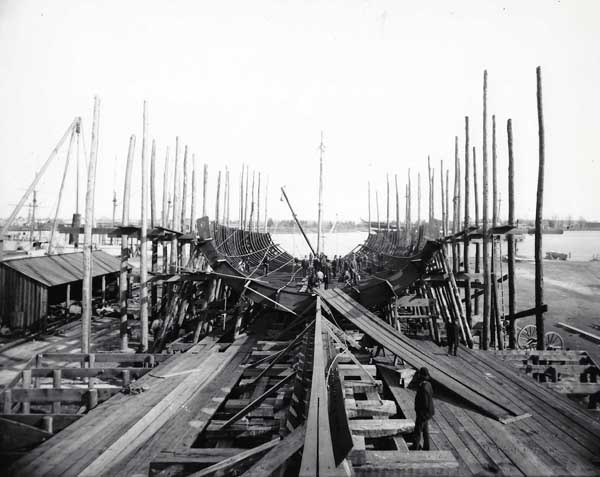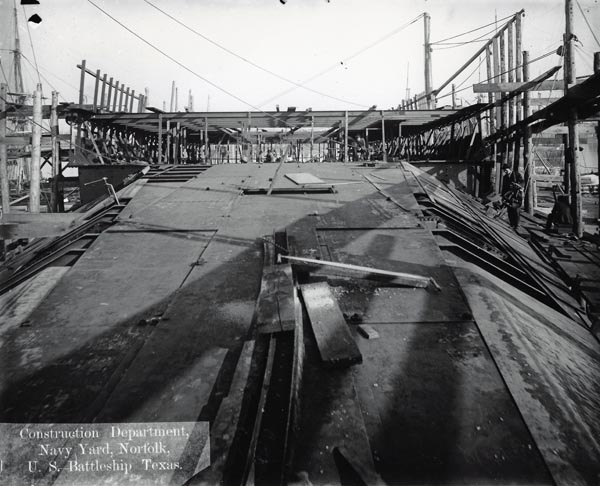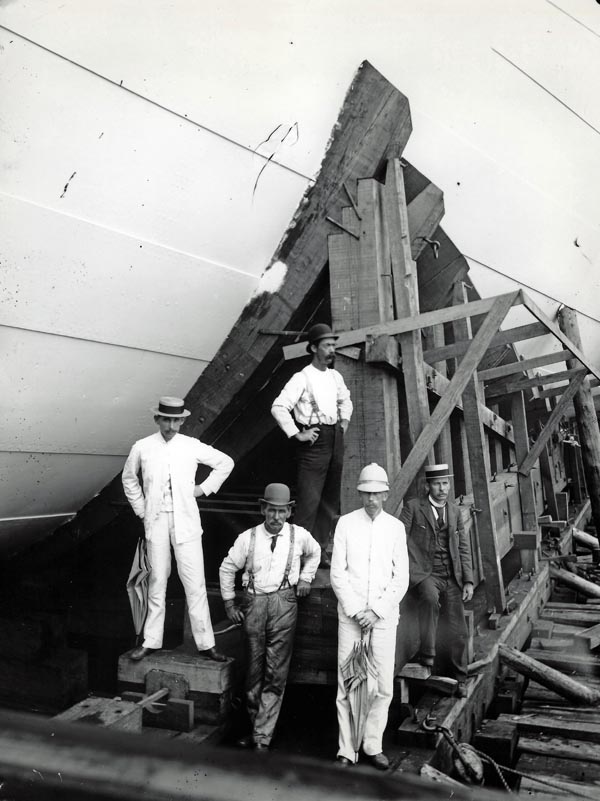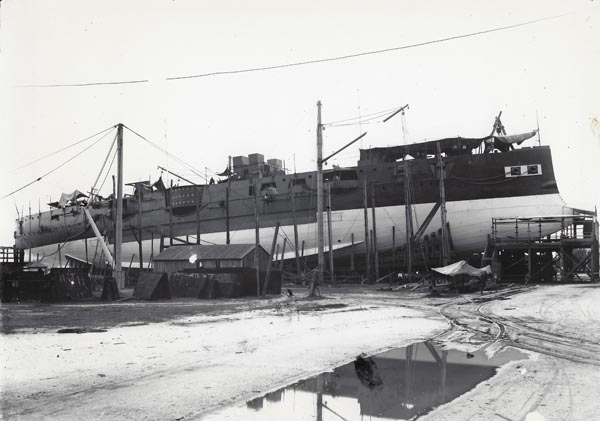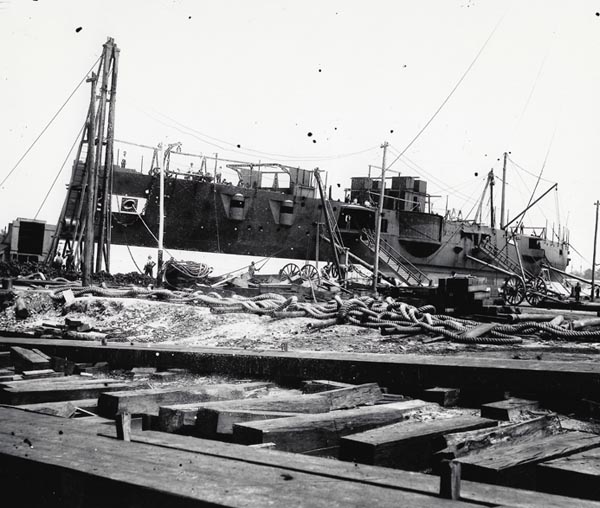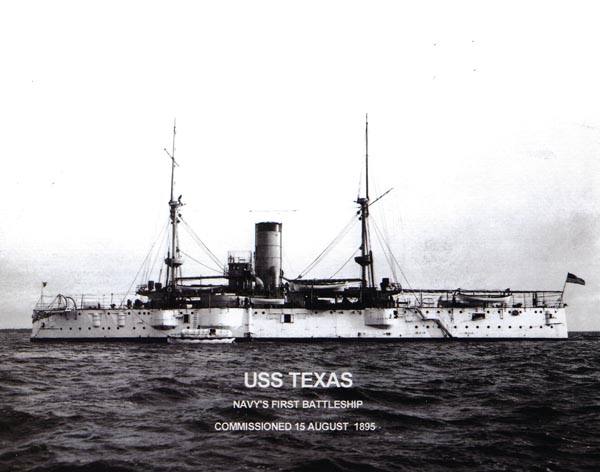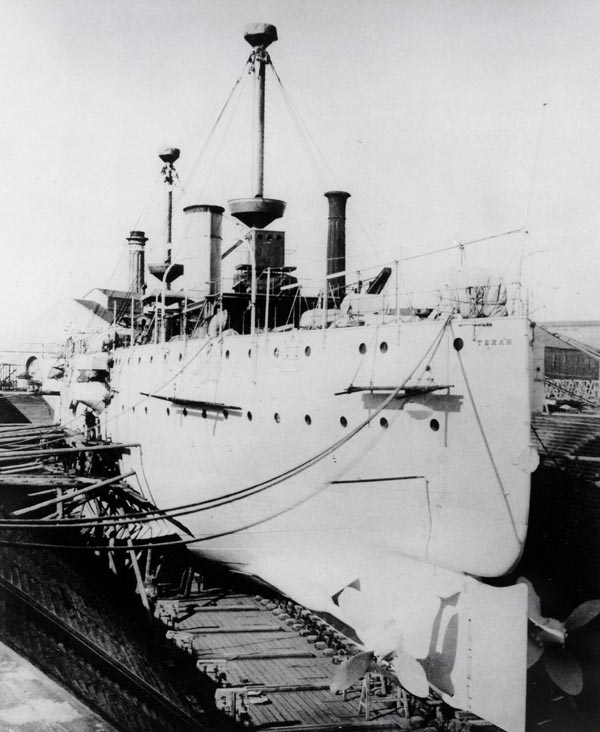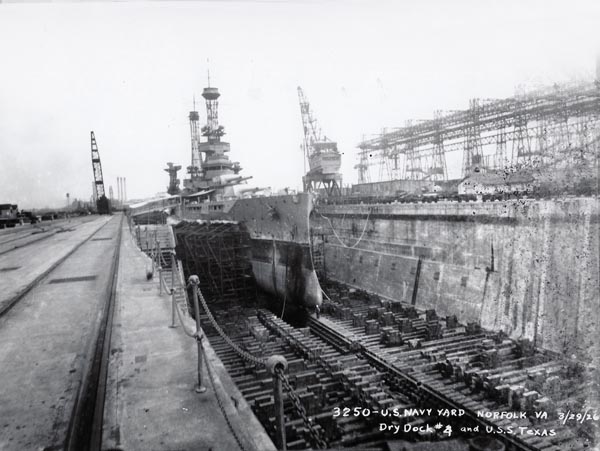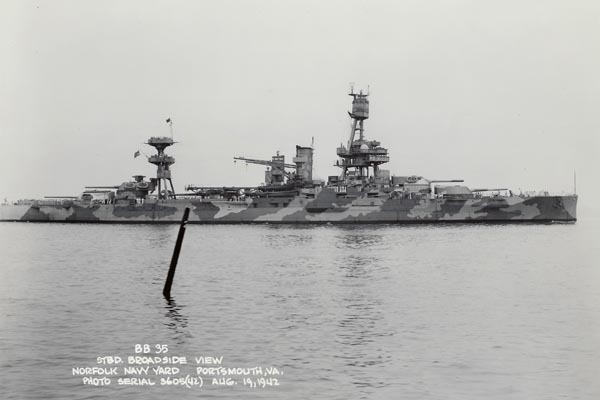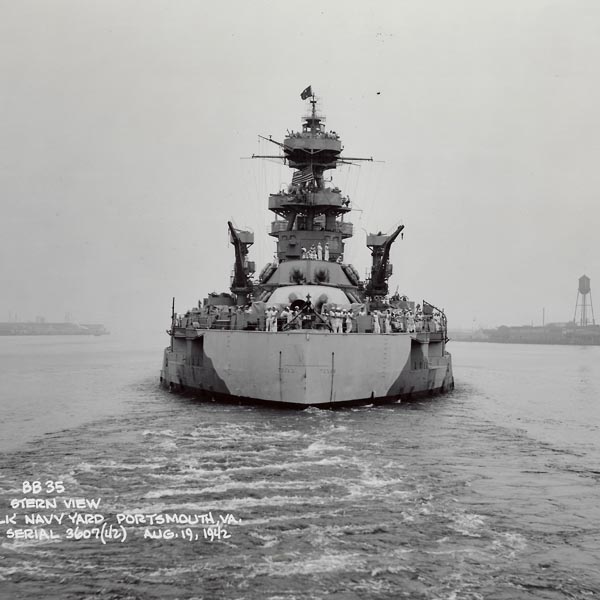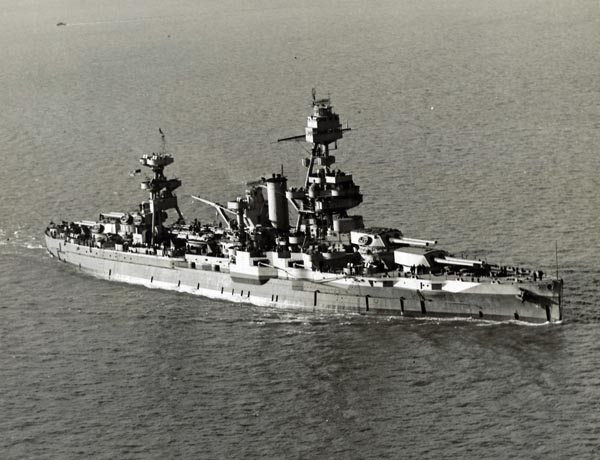|
Founded November 1, 1767, Norfolk Naval Shipyard is the oldest continuously operating shipyard in the United States, and is one of the largest and most multifaceted facilities serving the United States Navy. The Shipyard's mission is to maintain and modernize naval ships and provide emergency repairs, delivering full service to the nation's fleet. Full-service fleet capability includes being able to service both nuclear aircraft carriers and submarines. Norfolk Naval Shipyard is one of the nation's four public shipyards, which include Pearl Harbor Naval Shipyard and Intermediate Maintenance Facility in Pearl Harbor, Hawaii; Portsmouth Naval Shipyard in Kittery, Maine; and Puget Sound Naval Shipyard and Intermediate Maintenance Facility in Bremerton, Washington.
Norfolk Naval Shipyard built BB-35's predecessor, the first U.S. Navy Battleship to be commissioned, USS Texas in 1892. While our shipyard did not build BB-35, we outfitted it prior to is commissioning in 1914, thoroughly modernized it two decades prior to World War II and also prepared it for becoming a permanent memorial here in San Jacinto State Park following the war.
Norfolk Naval Shipyard is one of the installations under Naval Sea Systems Command, or NAVSEA. Under NAVSEA's "one shipyard" concept, naval shipyards share workloads and mobilize the workforce across the nation to best serve the fleet. This promotes high velocity learning, collaboration and knowledge sharing across the maintenance and repair community. In many ways the Navy was doing this more than a century ago, and it was happening right here on USS Texas. In some instances such as with Texas, Newport News Shipbuilding, also located in southeastern Virginia, would build the vessel, then send the ship across the James River over to Norfolk Naval Shipyard to complete outfitting. We have photos of the Texas in our shipyard in 1912 and 1913 undergoing such work.
The Norfolk Navy Yard, as Norfolk Naval Shipyard was known prior to 1945, served the United States fleet as one of World War II's most important shipbuilding and repair bases. From January 1, 1940, four months after the outbreak of war in Europe, to the end of the war with Japan on September 2, 1945, the Yard repaired, altered, converted, and accomplished work on 6,850 naval vessels. Concurrent with that work, more than 100 new ships and landing craft were built for the fleet, including three aircraft carriers, while millions of dollars in manufactured products were made to support the Navy. To perform its staggering amount of work, the Yard more than doubled its physical size, vastly increased its productive capacity, and pushed the workforce from 7,625 at the inception of World War II to a peak of 42,893 during the war. This expansion in employment, with personnel working around the clock, enabled the shipyard to handle more than 2,000 ships annually during its peak workload. At Norfolk Naval Shipyard during World War II, commitment, skill and patriotism were brought to bear on nearly every facet of America's naval power during World War II.
In the case of USS Texas, work performed at our shipyard nearly 20 years prior would effectively serve the pivotal invasion of Normandy. In 1925 Norfolk Navy Yard began a battleship modernization program that would last until 1934, providing an economic boon to Southeast Virginia. The work required hiring an additional 1,000 employees to join the shipyard ranks. Texas was the first in a line of battleships requiring modernization, arriving in the summer of 1925 for a sixteen-month conversion from a coal-burner to an oil-powered vessel. New boilers and propellers were installed; additional deck armor added; the ship's munitions changed out; and its interior given a general overhauling. Our shipyard's work entailed replacing the Texas' 14 coal-fired boilers with six oil-fired boilers; removal of torpedo tubes; upgrading its fire control equipment; and enhancing the anti-aircraft capability on Texas to eight 3-inch guns. Six of the 5-inch guns were relocated to new main deck casemates--casemates providing armored rooms for gunners. While powerful big-gun battleships threatened to make casemate guns irrelevant, they continued to prove their use as secondary weaponry on many navy ships until the conclusion of World War II.
During this conversion, the shipyard also replaced the cage masts on Texas with tripod masts. Cage masts were observation masts popular on American dreadnought battleships and armored cruisers of the World War I era. The benefits of the tripod mast, which was favored by the Royal Navy, included a raised platform providing increased visibility for observers and elevation for the fire control equipment, and reduced risk of shell damage to gear and personnel.
During the conversion of Texas at Norfolk Naval Shipyard, the ship's crew moved into quarters in the old assembly hall at one of the shipyard's annexes, the St. Helena Annex.
The modernization of USS Texas completed November 23, 1926. After this conversion, Texas became the flagship of the United States Fleet.
Following the Texas into our shipyard for complete modernizations were the battleships New York, Nevada, Arizona, Mississippi, and Idaho.
On D-Day, Texas was a crucial contributor in the first bombardment beginning before 6 A.M. at Pointe du Hoc, a particularly strategic location at Normandy due to it being on high land with a clear view of the English Channel. Over the next half hour, Texas fired an average of one shell every eight seconds-the Battleship's most rapid rate of fire during the entire war. Ten days after D-Day, with Allied troops having advanced to the edge of Texas' range of fire, the Battleship returned to England.
Norfolk Naval Shipyard also overhauled the the Battleship USS Arkansas, which came to the Shipyard in 1942 adding antiaircraft guns to its arsenal as a lesson learned from the Pearl Harbor attack. The first time Arkansas engaged in battle was at Normandy off Omaha Beach, where it remained for the next week hammering away at the German stronghold.I mentioned Nevada earlier, which was at Normandy and among the beneficiaries of the battleship modernization program in the 1920s. Nevada returned to the Shipyard in 1942 to have three 14-inch guns from the USS Arizona and two 14-inch guns from the USS Oklahoma, both sunk at Pearl Harbor, installed. It went on to be praised for its precise targeting in battering German concentrations at Normandy while successfully straddling counterattacks. Nevada was not only at the forefront of the war in Pearl Harbor enduring torpedo attack, it ended World War II in Okinawa bombarding Japan.
In addition to our modernizing battleships, Norfolk Naval Shipyard built four classes of ships supporting the Normandy invasion. This includes building three minesweepers, two destroyers, 10 tank landing ships known as LSTs, and multiple mechanized landing craft, or LCMs. From our minesweepers clearing the way for Allied ships sailing to Normandy, to our LSTs and LCMs delivering troops and valuable equipment ashore, to our constructed destroyers and modernized battleships hammering away at crucial targets, our shipyard supported all aspects of the naval effort on D-Day.
In early 1948, NNSY prepared BB-35 for its new role as a museum ship in San Jacinto State Park in Texas. After processing by NNSY, Texas was donated to its namesake state on April 30, 1948, to serve as a permanent memorial in San Jacinto State Park.
Today, our organizational values at Norfolk Naval Shipyard are care, ownership, respect and excellence. In living these values, we form high-performing teams providing superior quality and reliable delivery to the United States Navy. In living these values, we form the force behind the fleet designing and developing innovative solutions to some of the most challenging problems facing the Navy and nation in the 21st century. In living these values, we honor the legacy of the many thousands of employees who built, repaired, altered and converted the vessels that directly contributed to protecting our nation and winning World War II.
Twenty years following D-Day, Dwight D. Eisenhower was interviewed at Normandy by Walter Cronkite, who began his career as a war correspondent right here aboard this very vessel. Eisenhower reflected how the invasion contended with a narrow window of opportunity given the tides and weather, the Allied forces on the beaches coming under heavy fire, and the recognition that the cost of victory would be great. Speaking to Cronkite, Eisenhower said, "You see these people out here swimming and sailing their little pleasure boats and taking advantage of the nice weather and the lovely beach, Walter, and it is almost unreal to look at it today and remember what it was."
"But it's a wonderful thing to remember what those fellows twenty years ago were fighting for and sacrificing for, what they did to preserve our way of life. Not to conquer any territory, not for any ambitions of our own. But to make sure that Hitler could not destroy freedom in the world."
Eisenhower concluded, "I think it's just overwhelming. To think of the lives that were given for that principle, paying a terrible price on this beach alone, on that one day, 2,000 causalities. But they did it so that the world could be free. It just shows what free men will do rather than be slaves."
Today we not only remember the role vessels like USS Texas had in the successful invasion of Normandy, we ultimately remember and pay tribute to the many soldiers, sailors and airmen who not only fought and won that battle, but ultimately helped us win the war. The freedoms we hold dear are due to these service members who, boldly leading in extraordinary circumstances, became extraordinary themselves in exceptional acts of heroism and sacrifice.
Commander Norfolk Naval Shipyard
Captain Kai Torkelson
